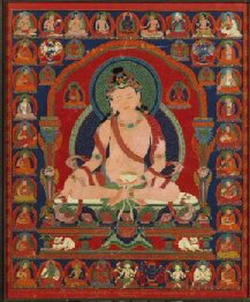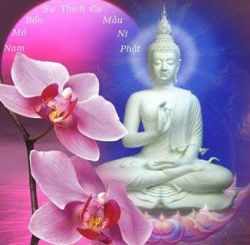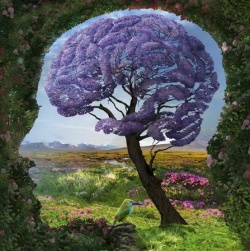Difference between revisions of "Avadhutipa"
| Line 55: | Line 55: | ||
{{R}} | {{R}} | ||
[http://www.himalayanart.org/image.cfm/60690.html www.himalayanart.org] | [http://www.himalayanart.org/image.cfm/60690.html www.himalayanart.org] | ||
| − | [[Category:]] | + | [[Category:Mahasiddhas]] |
Revision as of 01:43, 27 December 2014
Avadhutipa, Mahasiddha (Tibetan: drup tob awa dhu ti pa): an Indian master of tantric methods, the 6th guru of the Lamdre lineage descending from Virupa surrounded by the '[[Tip of the Flame'[Perfection Stage Lineage]]. There are three special traditions of practice associated with Padmavajra contained in the Sakya Lamdre system. The lineages of the three are essentially the same one to the other. (See the other related Lamdre Lineages).
The Indian mahasiddha Avadhutipa was a non-Buddhist King that was subdued and converted by the mahasiddha Damarupa. Animal sacrifice in the kingdom was stopped and the king took up the practice of the Buddhist religion. He renounced his kingdom and practiced a path free from extremes and became known as Avadhutipa; spending his time playing in the streets with the children of the kingdom. He is famous for transmitting the Margapala (Path.
Together with the Result) teachings to the Indian Pandita Gayadhara. Avadhutipa is 6th in the list of lineage teachers. The Margapala is known in Tibetan as the 'Lamdre' and primarily but not exclusively associated with the Hevajra Tantra and Vajra Verse commentary by the Mahasiddha Virupa.
Avadhutipa in painting is not typically ever depicted alone. All sculpture and paintings of the mahasiddha belong to much larger sets of figures depicting all of the Lineage teachers of the Lamdre Tradition. There are verses of praise directed to Avadhutipa but there are no Guruyoga practices or rituals focused directly on him as the central subject.
The term 'avadhutipa' or 'awadhutipa' refers to a mendicant, someone who has given up all worldly goods and concerns. It is intended as a title but come to also be used as a name by a number of different Indian mahasiddhas.
Iconography: Avadhutipa is typically shown in 'siddha appearance', in a seated posture with the legs loose, sometimes with one knee raised. He often has the right arm extended across the knee and the hand in a slight gesture of pointing with the fingers. The left hand can hold a skull bowl. Alternately the posture can be reversed and the skull bowl absent. He can wear either bone ornaments, jewelry or flowers, or any combination of the three depending on the skill and preference of the artist. In the Hevajra Tradition, and based on descriptions of 'heruka' appearance in the Hevajra Tantra text, flowers are stipulated as appropriate adornment to indicate an anti-social, anti-caste system behaviour.
At the upper left is Cause Hevajra, white in colour, with eight faces and sixteen hands. At the upper right is Result Hevajra and blue in colour. There are four figures of Amitayus Buddha and a single figure of Amitabha Buddha.
The deity figures at the bottom of the composition are drawn from two textual sources. The first is the Bari Gyatsa of Bari Lotsawa Rinchen Drag (1040-1112) and the second is the Sadhanasamucchaya which was translated from the Sanskrit into Tibetan by Lotsawa Dragpa Gyaltsen (12th century). Both texts are compendiums of deity practices. The first has nearly one hundred texts and the second has approximately one hundred and forty-three texts.
Along the bottom register beginning on the left side are seven deity figures. The first is Green Tara followed by a yellow female figure, followed by red Padmanarteshvara Avalokiteshvara. At the center is Hari Hari Hari Lokeshvara, white, with one face and six hands, followed by Black Lokeshvara with five faces and twelve hands. The final two figures on the right are both White Tara. The first has one face and four arms and the second, one face, and two arms and seven eyes.
[22] Hari Hari Hari Avalokiteshvara. The Lord of the World Hari Hari Hari Vahana Bhavan, with a body white in colour, one face [and] six hands. The first right performs a mudra, the second a bead garland and the third the mudra. The first left holds a stick, the second a krishnasara skin [and] the third a round bottle. [Having] the same ornaments and garments. Seated in the lalitaraja posture.
[23] Padmanarteshvara. Avalokiteshvara Padmanarteshvara, with a body red in colour, one face [and] two hands. At the left, similar to oneself is the mother, pink [in colour and] in a manner of embrace, holding a red lotus and opening it with the right [hand]. On the eight petals, in the east is Sita holding in the left [hand] a red lotus. In the south, green Tara holding a green lotus, the west yellow Ishvari Padma Dancer holding a blue utpala, the north white Bhrikuti holding a yellow lotus, the northeast yellow Padma Abode holding a red lotus, the southeast blue Padma Ishvari holding a white lotus, the southwest white Vishva Padma holding a blue lotus, the northwest various coloured Vishva Vajra holding a variously coloured lotus. All of the right hands are opening the lotus in the left. The Lord and retinue all have jewel ornaments and various silk garments. Seated in the vajrasattva [[[posture]]].
[24] Arya Avalokiteshvara, Wrathful Lord of the World. Arya Avalokiteshvara, with five faces. The body and main face are black, the right two [faces] are white and red, the left two, yellow and green. Each [face] has three eyes, bared fangs and yellow hair bristling upwards. [With] twelve arms, the six right [hands] hold, a small drum, katvanga, hook, lasso, vajra and arrow. The left six, a wrathful [[[mudra]]], skullcup, red lotus, jewel, chakra, and bow. Possessing the six mudras and adorned with a garland of human heads. Wearing a tiger skin as a lower garment. Standing in a manner with the left leg extended.
[26] Sita Tara: the three deity mandala of White Tara White Tara with four hands. The first two perform the utpala gesture. The lower right holds a wishing gem together with [the gesture of] supreme generosity. The lower left [holds] bunches of utpalas. [Having] the same ornaments, garments and seated posture. At the right on a moon is yellow Marichi, holding in the right [hand] a white yak-tail fan and in the left a branch of the ashoka tree. Wearing a red inner garment and a blue lower garment. At the left on a moon is green-yellow Maha Mayuri, holding in the right [hand] a yak-tail fan [and in] the left a peacock tail feather. Wearing various garments.
Jeff Watt [updated 12-2012]
Numbered Image & Padmavajra Hevajra Lineage:
1. Vajradhara (khyab bdag rdo rje 'chang)
2. Vilasya Vajra (bi lA sya badzra)
3. Anangavajra (yan lag med pa'i rdo rje)
4. Acharya Padmavajra (slob dpon mtsho skyes rdo rje)
5. Raja Indrabhuti (rgyal po in+dra bhu ti)
6. Lakshminkara (lcam la+kash+mi ka ra)
7. Acharya Krishnacharin (slob dpon nag po spyod pa)
8. Brahmin Shridhara (bram zed pal 'dzin)
9. Panchen Gayadhara (paN chen gay a dha ra)
10. Drogmi Shakya Yeshe ('brog mi shAkya ye shes)
11. Seton Kunrig (se ston kun rig)
12. Shangton Chobar (zhang ston chos 'bar)
13. Lama Sakyapa Chenpo (bla ma sa skya pa chen po)
14. Sonam Tsemo (bsod nams rtse mo)
15. Dragpa Gyaltsen (grags pa rgyal mtshan)
16. Sakya Pandita (sa skya paN Di ta)
17. Pagpa Lodro Gyaltsen ('phags pa blo gros rgyal mtshan)
18. [[[Shang Konchog Pal]] (1240-1308)]
19. Dragpugpa (1277-1350]
20. Palden Lama Dampa Sonam Gyaltsen (dpal ldan bla ma dam pa bsod nams rgyal mtshan)
21. Palden Tsultrim (dpal ldan tshul khrims)
22. Lama Dorje Chang Kunga Zangpo (bla ma rdo rje 'chang kun dga' bzang po)



